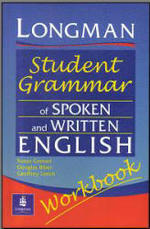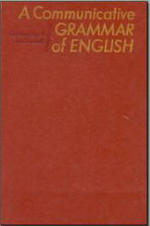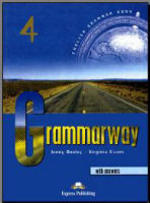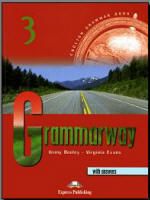Название: Longman Student Grammar of Spoken and Written English - 2003.
Автор: Douglas Biber, Susan Conrad, Geoffrey Leech
This book is a course book and a reference grammar for students and their
teachers. Although it is based on the Longman Grammar of Spoken and
Written English (LGSWE), the Student Grammar is much more than just an
abbreviated LGSWE. Rather, we have simplified and reorganized the content of
the LGSWE, avoiding much technical detail while retaining the strengths of the
larger book. For example, like the LGSWE, the Student Grammar contains
over 3,000 authentic English examples, and contrasts the major patterns of use in
spoken and written registers. However, we have simplified the presentation when
possible; for example, we have tried hard to find new and simpler extracts from
our corpus data, often replacing more complex examples in LGSWE.
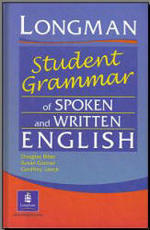
Of the five authors of LGSWE, we three owe a debt of gratitude to our two
other co-authors: Stig Johansson and Ed Finegan. We benefited from the work
that Stig and Ed did on the LGSWE during our writing of the Student
Grammar. We would also like to thank the students in English 528 at Northern
Arizona University, who used a draft of the Student Grammar as their grammar
textbook and provided numerous helpful comments and suggestions for
revision.
To support the educational use of the Student Grammar, we have also
written a Workbook, which can be used as a classroom textbook or for self-study
by students. The Workbook provides exercises based on authentic English texts
and sentences, linked directly to the Grammar Bites in the present book.
Contents
Preface
Abbreviations, symbols, and conventions
Grammar Bites in each chapter
1. Introduction: a discourse perspective on grammar
1.1 Introduction 2
1.2 A corpus-based grammar 3
1.3 More about language variation 4
1.4 More detail on the LSWE Corpus 7
1.5 Overview of the book 9
1.6 Conventions used in the book 10
2. Words and word classes 12
2.1 Introduction 13
2.2 What are words? 14
2.3 Survey of lexical words 20
2.4 Survey of function words 26
2.5 Special classes of words 32
2.6 Word-class ambiguities 35
3. Introduction to phrases and clauses 37
3.1 Introduction 38
3.2 Phrases and their characteristics 38
3.3 Types of phrases 41
3.4 A preview of clause patterns 46
3.5 Clause elements 47
4. Nouns, pronouns, and the simple noun phrase 55
4.1 Introduction 56
4.2 Main types of nouns 56
4.3 Proper nouns v. common nouns 59
4.4 Package nouns 60
4.5 Determiners 65
4.6 The articles 67
4.7 Other determiners 72
4.8 Number: singular and plural 78
4.9 Case: the genitive 79
4.10 Gender 85
4.11 The formation of derived nouns 88
4.12 Personal pronouns 93
4.13 Reflexive pronouns 97
4.14 Demonstrative pronouns 98
4.15 Indefinite pronouns 99
4.16 Other pronouns 101
5. Verbs 102
5.1 Introduction 103
5.2 Verb functions and classes 103
5.3 Semantic categories of lexical verbs 106
5.4 The most common lexical verbs 110
5.5 Regular and irregular verb endings 115
5.6 Verb formation 118
5.7 Valency patterns 119
5.8 Multi-word verbs: structure and meaning 123
5.9 Phrasal verbs 127
5.10 Prepositional verbs 129
5.11 Phrasal-prepositional verbs 132
5.12 Other multi-word verb constructions 134
5.13 Be 135
5.14 Have 136
5.15 Do 137
5.16 The copula be, and other copular verbs 140
5.17 Functions of copular verbs 141
6. Variation in the verb phrase: tense, aspect, voice, and modal use 148
6.1 Introduction 149
6.2 Tense and time distinctions: simple present and past tense 150
6.3 Perfect and progressive aspect 156
6.4 Perfect aspect in use 159
6.5 Progressive aspect 162
6.6 Active and passive voice 166
6.7 Associations between verbs and passive voice 170
6.8 Voice and aspect combinations 173
6.9 Modals and semi-modals 174
6.10 Personal and logical meanings of modals 178
6.11 Be going to and used to 182
6.12 Modals combined with aspect or voice 183
6.13 Sequences of modals and semi-modals 184
7. Adjectives and adverbs 186
7.1 introduction 187
7.2 Characteristics of adjectives 188
7.3 The formation of adjectives 190
7.4 The function of adverbs 193
7.5 The formation of adverbs 193
7.6 Semantic categories of adjectives 197
7.7 More about attributive adjectives 199
7.8 More about predicative adjectives 200
7.9 Other syntactic roles of adjectives 202
7.10 Syntactic roles of adverbs 204
7.11 Semantic categories of adverbs 208
7.12 Comparative and superlative forms of adjectives 215
7.13 Comparative and superlative forms of adverbs 218
7.14 Comparative clauses and other degree complements 218
8. Exploring the grammar of the clause 221
8.1 Introduction 222
8.2 Devices of elaboration and condensation 223
8.3 Subordination and dependent clauses 224
8.4 Coordination 227
8.5 Ellipsis and structural condensation 230
8.6 The subject-verb concord rule 232
8.7 Verbs as operators 238
8.8 Negation 239
8.9 Major types of independent clause 248
8.10 Declarative clauses 249
8.11 Interrogative clauses 249
8.12 Exclamative clauses 254
8.13 Imperative clauses 254
8.14 Non-clausal material 255
8.15 Finite dependent clauses 256
8.16 Non-finite dependent clauses 259
8.17 Subjunctive verbs in dependent clauses 261
8.18 Dependent clauses with no main clause 262
9. Complex noun phrases 263
9-i Introduction 264
9.2 Survey of noun modifier types 265
9.3 Noun phrases with premodifiers and postmodifiers across registers 267
9.4 Types of premodifiers 272
9.5 Meaning relationships expressed by noun + noun sequences 273
9.6 Noun phrases with multiple premodifiers 276
9.7 Restrictive v. non-restrictive function 279
9.8 Postmodification by relative clauses 281
9.9 Postmodification by non-finite clauses 291
9.10 Postmodification by prepositional phrase 294
9.11 Postmodification by appositive noun phrases 297
9.iz Noun phrases with multiple postmodifiers 298
9.13 Noun complement clauses 300
9.14 Head nouns with noun complement clauses 302
10. Verb and adjective complement clauses 307
10.1 Introduction 308
10.2 Types of complement clauses 308
10.3 Grammatical positions of complement clauses 310
10.4 Discourse functions of that-clauses 312
10.5 Post-predicate f/iaf-clauses 314
10.6 Verbs controlling extraposed that-clauses 317
10.7 Tnat-clauses controlled by adjectives 317
10.8 Discourse choices with tbat-clauses 319
10.9 Structure and function of wh-clauses 322
10.10 Post-pre die ate wh-clauses controlled by verbs 324
10.11 Interrogative clauses with whet/ierand if 326
10.12 Overview of infinitive clauses 328
10.13 Post-predicate to-clauses controlled by verbs 328
10.14 Subject predicative to-clauses 334
10.15 Post-predicate to-clauses controlled by adjectives 335
Ю.16 Raising 337
10.17 Extraposed to-clauses 338
10.18 Raising v. extraposition 341
10.19 To-clause types across registers 342
10.20 Overview of /Tig-clauses 344
10.21 Post-predicate /ng-clauses 344
10.22 Ellipsis and substitution in complement clauses 348
10.23 Choice of complement clause type 349
11. Adverbials 353
11.1 Introduction 354
11.2 The main classes of adverbials 355
11.3 Syntactic forms of adverbials 358
11.4 Positions of adverbials 359
11.5 The relationship between adverbials and other clause elements 361
11.6 Semantic categories of circumstance adverbials 362
11.7 Extremely common circumstance adverbials in conversation 368
11.8 Positions of circumstance adverbials 369
11.9 Additional semantic categories of circumstance adverbial clauses 373
11.10 Syntactic forms of adverbial clauses 376
11.11 Positions of adverbial clauses 378
11.12 Subordinators with circumstance adverbial clauses 380
11.13 Semantic categories of stance adverbials 382
11.14 The most common stance adverbials 386
11.15 Positions of stance adverbials 387
11.16 Other discourse functions of stance adverbials 388
11.17 Semantic categories of linking adverbials 389
11.18 The most common linking adverbials in conversation and academic prose 393
11.19 Positions of linking adverbials 394
12. Word order choices 397
12.1 Introduction 398
12.2 Word order 400
12.3 Fronting 100
12.4 Inversion 405
12.5 Existential there 412
12.6 The verb in existential there clauses 414
12.7 The notional subject 414
12.8 Adverbials in existential clauses 415
12.9 Simple v. complex existential clauses 415
12.10 Discourse functions of existential clauses 416
12.11 Dislocation 418
12.12 Clefting 419
12.13 Word order choices after the verb 423
12.14 Summary: syntactic choices in conversation v. academic prose 425
13. The grammar of conversation 427
13.1 Introduction 428
13.2 The discourse circumstances of conversation 429
13.3 Performance phenomena in conversation 436
13.4 Non-clausal units 440
13.5 Ellipsis 441
13.6 Lexical bundles in speech 443
13.7 Inserts 449
Glossary of terms 455
A-Z list of irregular verbs 462
Index 464
Купить - Книгу - Longman Student Grammar of Spoken and Written English - Douglas Biber, Susan Conrad, Geoffrey Leech .com
Купить - Книгу - Longman Student Grammar of Spoken and Written English - Douglas Biber, Susan Conrad, Geoffrey Leech .net
Теги: скачать книгу по английскому языку бесплатно :: Longman Student Grammar :: Douglas Biber :: Susan Conrad :: Geoffrey Leech
Смотрите также учебники, книги и учебные материалы:
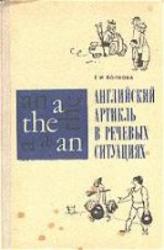 Английский артикль в речевых ситуациях - Волкова Е.А. — Английский артикль в речевых ситуациях. Волкова Е.А. Настоящее пособие предназначено для учителей средней школы. Оно должно способствовать сознательному закреплению в … Книги по английскому языку
Английский артикль в речевых ситуациях - Волкова Е.А. — Английский артикль в речевых ситуациях. Волкова Е.А. Настоящее пособие предназначено для учителей средней школы. Оно должно способствовать сознательному закреплению в … Книги по английскому языку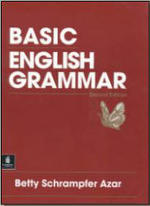 Basic English grammar for students, Betty Azar — Basic English grammar. Betty Azar. 1996. Basic English Grammar is a developmental skills text for students of English as a … Книги по английскому языку
Basic English grammar for students, Betty Azar — Basic English grammar. Betty Azar. 1996. Basic English Grammar is a developmental skills text for students of English as a … Книги по английскому языку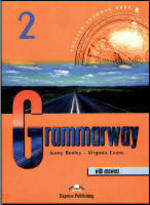 Grammarway 2 - Jenny Dooley, Virginia Evans — Grammarway 2. Jenny Dooley, Virginia Evans Grarnmarway 2 is the second book in a four-level grammar series presented in full … Книги по английскому языку
Grammarway 2 - Jenny Dooley, Virginia Evans — Grammarway 2. Jenny Dooley, Virginia Evans Grarnmarway 2 is the second book in a four-level grammar series presented in full … Книги по английскому языку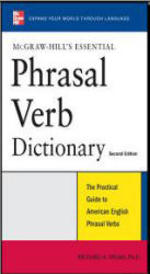 McGraw-Hill s Essential Phrasal Verbs Dictionary - Richard Spears — McGraw-Hill s Essential Phrasal Verbs Dictionary. Richard Spears. 2005. Phrasal verbs, also called two-word verbs, are idiomatic expressions wherein the … Книги по английскому языку
McGraw-Hill s Essential Phrasal Verbs Dictionary - Richard Spears — McGraw-Hill s Essential Phrasal Verbs Dictionary. Richard Spears. 2005. Phrasal verbs, also called two-word verbs, are idiomatic expressions wherein the … Книги по английскому языку
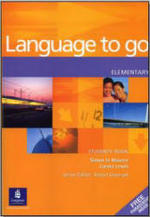 Language to go - Elementary - Student’s book - Simon le Maistre, Carina Lewis — Language to go - Elementary - Student s book. Simon le Maistre, Carina Lewis. 2002. 40 lessons, each on a … Книги по английскому языку
Language to go - Elementary - Student’s book - Simon le Maistre, Carina Lewis — Language to go - Elementary - Student s book. Simon le Maistre, Carina Lewis. 2002. 40 lessons, each on a … Книги по английскому языку Kaplan TOEFL iBT — 2006, 2007. From the creators of the 1 TOEFL course... TOEFL iBT Exam is Kaplan s comprehensive guide to preparing … Книги по английскому языку
Kaplan TOEFL iBT — 2006, 2007. From the creators of the 1 TOEFL course... TOEFL iBT Exam is Kaplan s comprehensive guide to preparing … Книги по английскому языку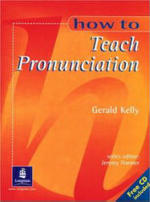 How To Teach Pronunciation - Gerald Kelly — How To Teach Pronunciation. Gerald Kelly. 2001. This book aims to help teachers gain theoretical knowledge and to confirm and … Книги по английскому языку
How To Teach Pronunciation - Gerald Kelly — How To Teach Pronunciation. Gerald Kelly. 2001. This book aims to help teachers gain theoretical knowledge and to confirm and … Книги по английскому языку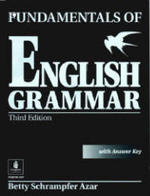 Fundamentals of English Grammar - Betty Azar — Fundamentals of English Grammar. Betty Azar. 2003. The Third Edition of Fundamentals of English Grammar combines communicative methods with the … Книги по английскому языку
Fundamentals of English Grammar - Betty Azar — Fundamentals of English Grammar. Betty Azar. 2003. The Third Edition of Fundamentals of English Grammar combines communicative methods with the … Книги по английскому языку

